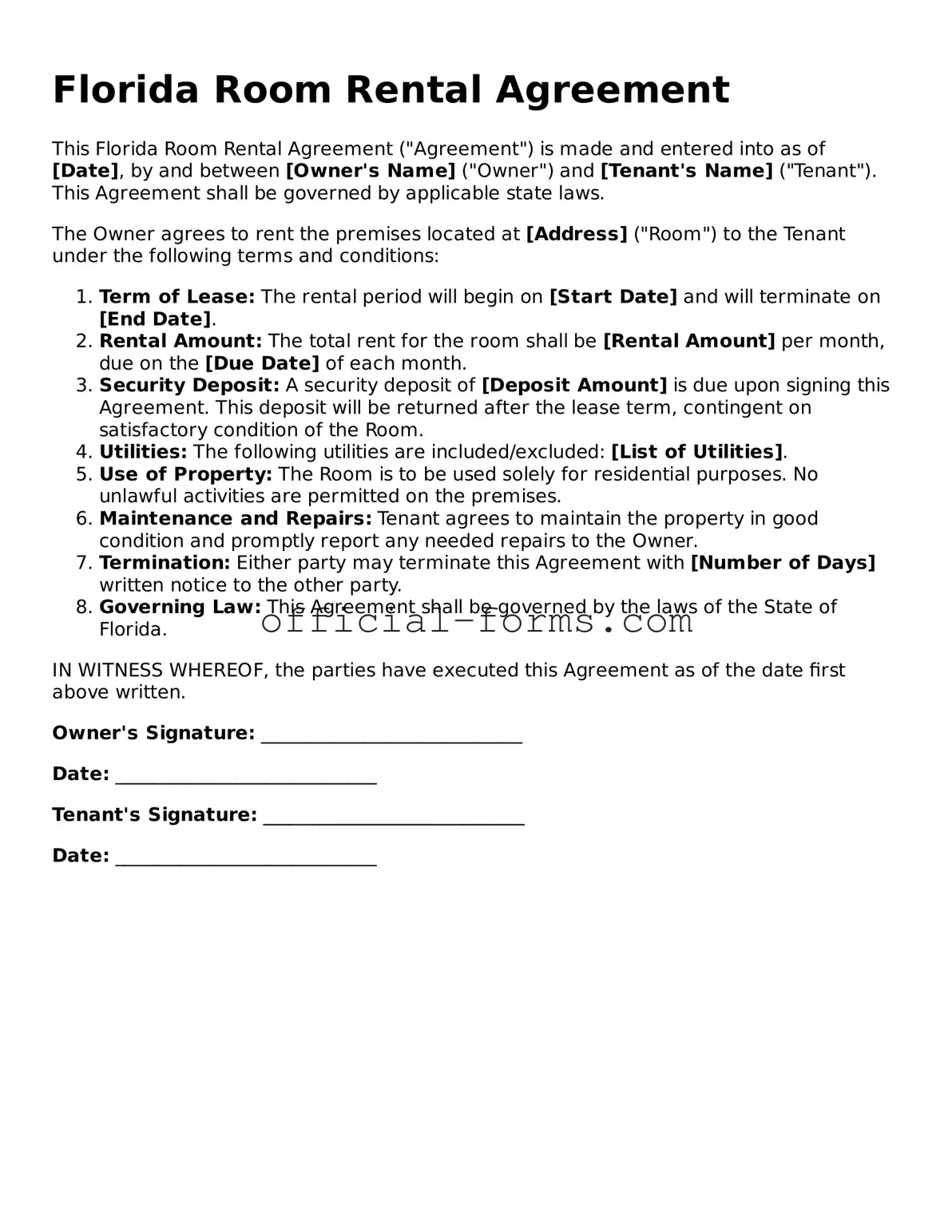Official Florida Room Rental Agreement Document
The Florida Room Rental Agreement is a legal document that outlines the terms and conditions between a landlord and a tenant for renting a room in a residential property. This agreement serves to protect both parties by clearly defining responsibilities, payment details, and rules for the rental period. Understanding this form is essential for ensuring a smooth rental experience in Florida.
Open My Room Rental Agreement Now
